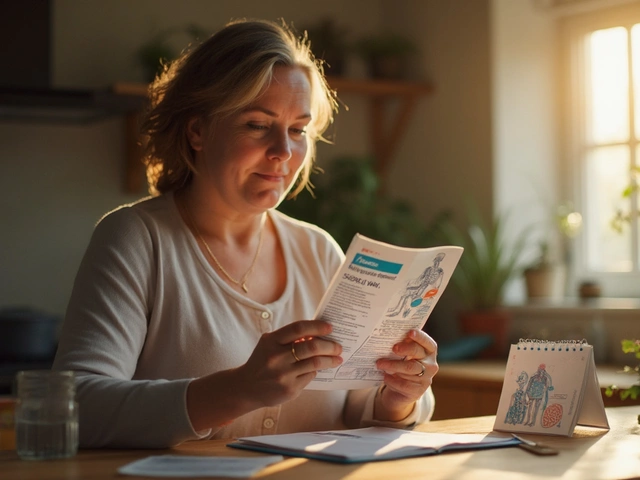Amlodipine Safety: Simple Tips for Everyday Use
If you’ve been prescribed amlodipine, you probably have questions about how safe it is. Amlodipine is a calcium‑channel blocker that helps lower blood pressure and ease chest pain. Most people take it without problems, but knowing the basics can keep you from surprises.
First, follow the dose your doctor gives you. The usual start is 5 mg once a day, and some people need to go up to 10 mg. Don’t change the amount on your own – even a small jump can cause a drop in blood pressure that makes you feel dizzy or light‑headed.
Common Side Effects and How to Manage Them
Like any medicine, amlodipine can cause side effects. The most common are swelling in the ankles or feet, a feeling of warmth in the face, and a gentle headache. These usually get better after a few days as your body gets used to the drug.
If you get ankle swelling, try moving your legs more often, keep them elevated while you’re sitting, and wear loose socks. A light headache can be eased with a glass of water and a short rest. If the swelling or headache doesn’t improve after a week, call your pharmacy or doctor for advice.
Rarely, people experience a fast heartbeat, chest pain, or severe dizziness. When these happen, it’s a sign to seek help right away. Most side effects are mild, but you should never ignore anything that feels off.
When to Call Your Doctor
Contact your doctor if you notice any of these red flags: sudden drop in blood pressure causing faintness, a fast or irregular heartbeat, severe chest pain, or swelling that spreads quickly. Also, if you’re pregnant, planning to become pregnant, or breastfeeding, let your doctor know because the dosage may need to change.
Another important point is drug interactions. Amlodipine can mix badly with certain antibiotics, antifungals, and other blood pressure meds. Always tell your doctor about every prescription, over‑the‑counter pill, and supplement you take.
Alcohol isn’t a big problem for most people on amlodipine, but drinking a lot can lower blood pressure too much, making dizziness more likely. Keep your drinks moderate and watch how you feel.
Lastly, keep a short note of any side effects you notice. Write down when they start, how long they last, and anything that seems to make them better or worse. This log helps your doctor decide if you need a dose change or a different medication.
In short, amlodipine is safe for most users when taken as directed. Stick to the prescribed dose, watch for common side effects, and reach out to your doctor if anything feels unusual. With those steps, you can keep your blood pressure in check without hassle.
Amlodipine and Cancer: What the Latest Research Really Says
Worried amlodipine might raise cancer risk? Here’s a clear, evidence-backed answer, what big studies show, and practical steps if you’re concerned.






